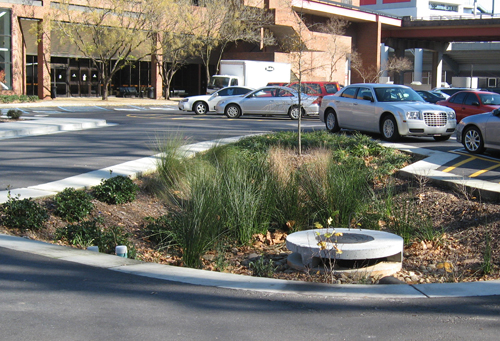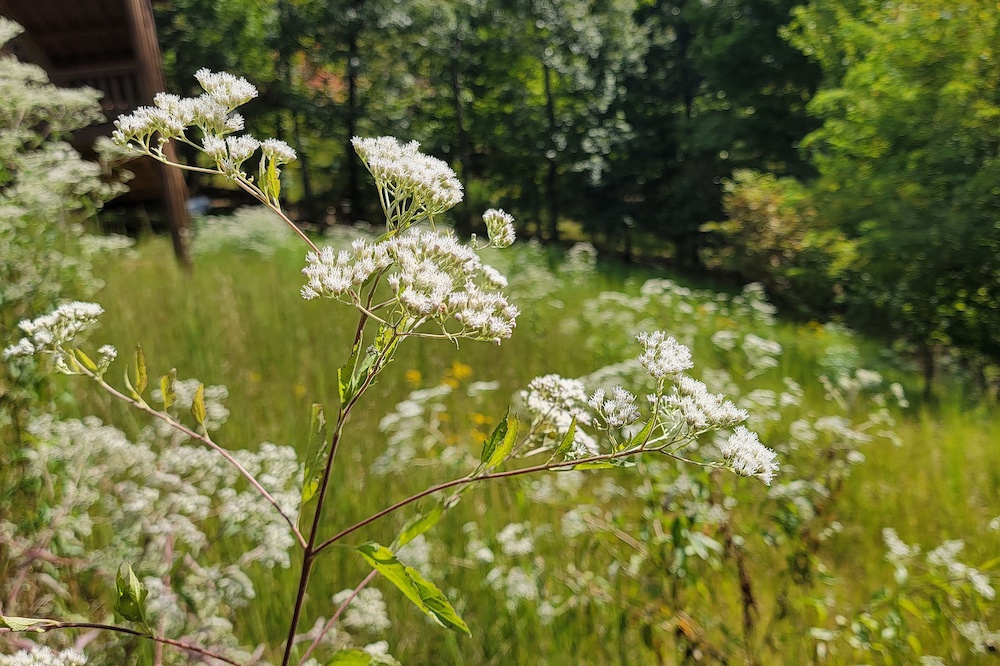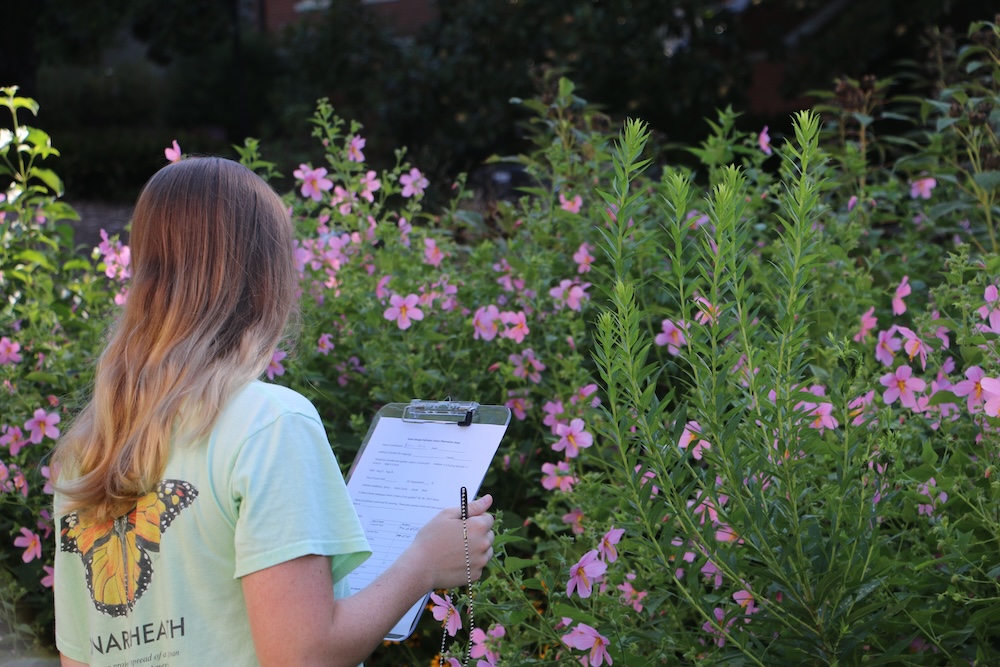Put stormwater to good use by adding rain gardens to your landscape, says a University of Georgia water expert.
“The key is to find a site that captures a shallow amount of water and holds it for a short time,” said Sheryl Wells, a stormwater specialist with the UGA College of Agricultural and Environmental Sciences.
Helps reduce flood risks, too
Rain gardens benefit the environment by capturing stormwater, reducing runoff and reducing flood risk in area streams. Rain gardens aren’t ponds or water gardens, Wells said. The shallow amount of water a rain garden needs doesn’t remain for a long time like in a wetland or bog garden.
“You just don’t want to create a breeding ground for mosquitoes,” she said.
Properly designed rain gardens drain within 48 hours, before mosquitoes can breed.
Pick a low spot
When selecting a location, choose a spot where water naturally flows to a low area. Place a rain garden near a patio or driveway to catch and use runoff from these surfaces.
“Rain gardens must be downstream of where the runoff begins, so place your rain garden in lower areas where water will naturally move,” Wells said.
Rain gardens shouldn’t be installed over septic tanks or within 50 feet upstream or 10 feet downstream of septic system drainage fields.
“If there is a seasonally high water table in the landscape, a rain garden should not be located over that area,” Wells said. “If water stands in the area for long periods after rainfall or if wetland-type plants are evident, the location likely has a water table too high for a rain garden.”
Make sure your site is at least 10 feet from a building. A rain garden’s size is determined by how much runoff it will filter. Often, a rain garden will only capture runoff from downspouts of a house roof.
Use rope or hose to design shape
To design the garden, use a rope, a garden hose or outdoor marking paint to outline the area. Remove 4-6 inches of topsoil and excavate the area to the depth desired minus the 4-6 inches of topsoil.
The soil removed from the middle can be moved to the downhill side of the rain garden to form the outer berm. The inside of the rain garden should be flat, and the soil loose in preparation for returning the topsoil.
Check soil drainage rate
Just like Goldilocks and her porridge, rain gardens need soil that holds just the right amount of water.
Test the site’s soil for permeability. Sandy loam or loamy sand are ideal as their permeability rate is 1 to 6 inches per hour, Wells said.
If water absorbs rapidly into the soil, build a small rain garden. If water infiltrates slowly, the rain garden needs to be larger. If native soils don’t have suitable permeability, replace the soil with a more permeable soil mix.
Compost used in a rain garden should be mature, well-composted materials, not just any kind of fresh organic matter. More mature composts have lower nutrient content and release nutrients slowly. Uncomposted manures are likely too high in nitrogen or phosphorus.
Just like other gardens, the rain garden soil should be tested before adding plants. Soil tests show the soil’s pH and nutrient content. Test kits are available at UGA Cooperative Extension offices.
“A rain garden’s ponding depth should be 4 to 9 inches,” Wells said. “A ponding depth of more than 9 inches may pond water too long.”
Add perennial and choice annuals
Perennial plants and trees can be planted in rain gardens. Choose annuals with low water requirements. For best results, mix a variety of wet- and drought-tolerant trees, shrubs, perennials and ornamental grasses. Turfgrass can be used but is not typically mixed with ornamentals.
Avoid plants that are susceptible to root rots like most coniferous shrubs, adapted exotic azaleas, Indian hawthorne and camellias.
For a complete list of suggested rain garden plants, see the UGA rain garden publication on-line at www.caes.uga.edu/Publications.








